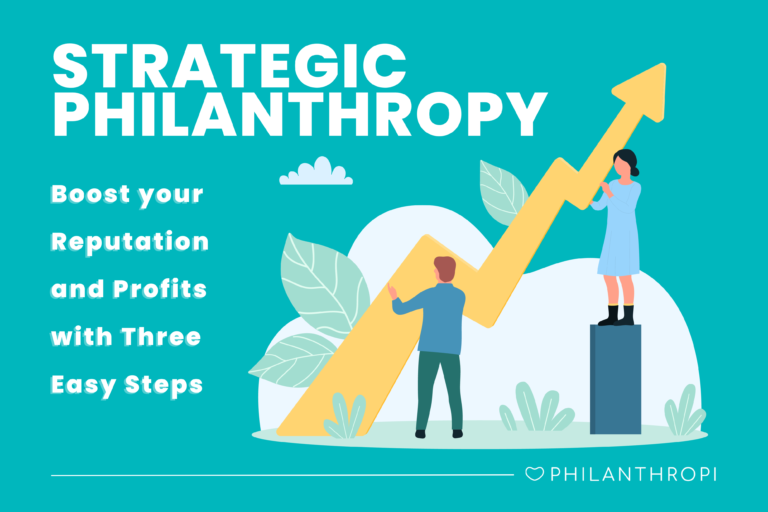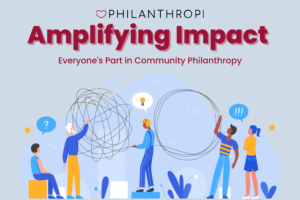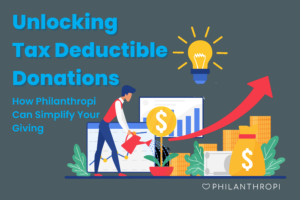In today’s world, where corporate social responsibility is at the forefront of many business strategies, philanthropy isn’t just about writing checks. Instead, it’s about making a meaningful and sustainable impact. Enter strategic philanthropy—a method that can transform not only the communities it serves but also the businesses that adopt it. In this post, we’ll dive into what strategic philanthropy is, offer some compelling examples, and highlight its numerous benefits.
What is Strategic Philanthropy?
Strategic philanthropy refers to the intentional and thoughtful integration of charitable giving into a company’s business strategy and values. It’s not just about making donations; it’s about aligning those donations with your business’s goals, values, and mission, ensuring that every dollar spent makes a significant impact.
For businesses, particularly small ones that prioritize corporate social responsibility, strategic philanthropy can be the bridge that connects their drive to make a difference with the practicalities of tax-deductible opportunities and sustainable business growth.
Three Easy Ways to Incoporate Strategic Philanthropy
- Employee-Driven Initiatives:
Many businesses are embracing a bottom-up approach instead of top-down philanthropy. Take Philanthropi’s Impact Account™, for instance. This initiative empowers employees to give and take action, ensuring that charitable activities resonate with the workforce, driving engagement and satisfaction. - Partnerships with Non-Profits:
Rather than spreading resources thinly, a company might collaborate with a single or select group of non-profits whose mission aligns with its own. This results in a deeper, more impactful relationship. - Incorporating Philanthropy into Products or Services:
Businesses might offer products or services where a portion of the profit goes to a chosen cause, also known as cause marketing. This not only raises funds but also heightens consumer awareness about specific issues.
Benefits of Strategic Philanthropy
- Enhanced Company Reputation:
When a business’s philanthropic efforts align with its mission, it often garners positive press and heightened respect from consumers, partners, and the broader community. - Increased Employee Engagement:
A recent Gallup poll outlined that companies with engaged employees outperformed those without by up to 202%. It has also been shown that millennial workers, a key demographic in today’s workforce, value companies that prioritize social responsibility. When they see their employer actively participating in meaningful causes, it boosts morale, retention, and attraction of top talent. - Tax Benefits:
By strategically aligning charitable activities with business goals, companies like those partnered with Philanthropi can take full advantage of tax-deductible opportunities, ensuring that their charitable investments are also financially prudent. - Strengthened Community Ties:
Businesses that invest in their communities create a positive feedback loop. They not only foster goodwill but often find that the community becomes more supportive of their business endeavors in return.
In conclusion, strategic philanthropy is more than just giving—it’s giving with purpose. By integrating charity into the core business strategy, companies can enjoy numerous benefits while amplifying their impact. As we like to say at Philanthropi: Giving Simplified… Impact Amplified™. So, isn’t it time your business rethinks its approach to philanthropy?
Frequently Asked Questions
1. What makes strategic philanthropy different from traditional philanthropy?
Strategic philanthropy aligns charitable efforts directly with a company’s business goals and mission, ensuring every donation maximizes impact. Traditional philanthropy may not always have this alignment and can often be more reactive to immediate needs.
2. How does employee engagement enhance strategic philanthropy?
Employee engagement ensures a bottoms-up approach to giving, making charitable activities resonate more with the workforce. This drives higher satisfaction, fosters a sense of ownership, and creates a more invested and motivated team.
3. Why is measuring the impact of philanthropic efforts essential?
Measurement allows businesses to assess the effectiveness of their charitable endeavors, ensuring alignment with intended goals and maximizing the return on investment, both in terms of financial benefits and community impact.
4. Can small businesses benefit from strategic philanthropy?
Absolutely! Strategic philanthropy isn’t just for large corporations. Small businesses can leverage it to foster goodwill in their communities, enhance their reputation, engage employees, and benefit from tax-deductible opportunities.
5. What role does Philanthropi play in strategic philanthropy?
Philanthropi creates a customizable solution that bridges businesses’ drive to make a difference with practical benefits, like tax deductions. Offerings like our Impact Account™ can help companies and their employees amplify their philanthropic efforts.



